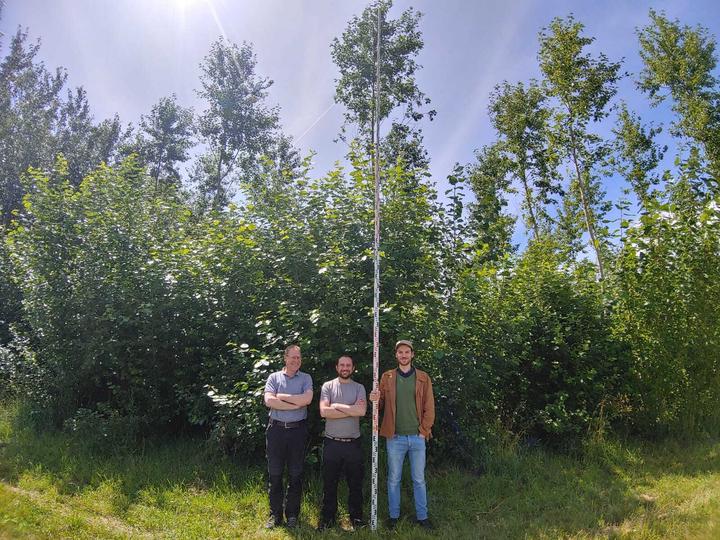HortiBonn meets agroforestry and bioeconomy visionary Wolfram Kudlich

On July 4th and 5th, 2024, HortiBonn’s Dr. Marcos Jiménez Martínez ABCDR and Simon Swatek REFOREST had the opportunity to meet poplar farmer and consultant Mr. Wolfram Kudlich at his office in Uffenheim. Kudlich, known for his innovative approaches to fast growing tree production through his work at Wald21, welcomed us to discuss insights from his 18 years of working with hybrid poplars.During our visit, Kudlich shared his vision of using the remarkable growth rate of hybrid poplars to establish a sustainable bioeconomy. We were given an in-depth tour of Kudlich’s poplar plantations, where cuttings for the establishment of plantations as well as agroforestry systems are produced according to “Bioland”-standards. Furthermore Kudlich introduced his unique cultivation system known as “Kombi-KUP” while showcasing his demonstration site (see picture). The term “Kombi-KUP” originates from the German words for “combination” and “short rotation coppice plantations”, which in Kudlich’s system are supplemented by two longer growing cycles. Kudlich hypothesizes that the Kombi-KUP system is designed to optimize land use efficiency by combining three harvesting cycles on the same plot of land:
- First Rotation (6-8 years): Every second tree row is fully harvested, and 40-50% of the remaining rows are additionally harvested.
- Second Rotation (12-14 years): Half of the trees left standing after the first rotation are harvested for industrial timber, while the remaining trees are left to develop into high-quality logs. Additionally, all that regrew after the first rotation, is cut again.
- Third Rotation (17-20 years): The highest grade logs are harvested for construction or other high-grade purposes, and any remaining regrowth is harvested as biomass before the recultivation process begins.
Kudlich’s Kombi-KUP system is supposed to offer a viable option for farmers interested in agroforestry and diversifying their income streams. While the method is currently being tested in a conventional plantation setting, Kudlich estimates, that an alley croppig setting could provide an even higher overall biomass production per unit area. This estimation is based on his observations that the outermost trees in his plantations, which receive more light, produce significantly more biomass over the same period compared to the trees in the inner rows. We gained valuable insights from this visit, which will be incorporated into future holistic modeling projects. These projects will explore carbon dynamics and business performance, further contributing to the scaling of agroforestry solutions. Special thanks to Mr. Wolfram Kudlich for sharing his expertise and inspiring us with his visionary approach to sustainable agriculture.